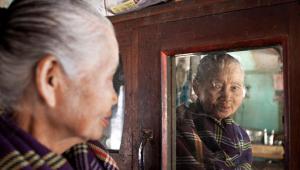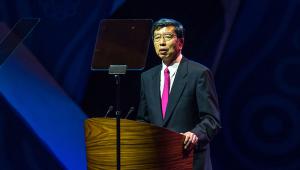The rate of the region’s demographic transformation is unparalleled, with a boom in working-age population and falling birth rates that took a century in Europe occurring in just 30 years in Asia Pacific.
The UNDP’s latest regional Human Development Report said the region must start planning for these developments, or risk frustrated youths, instability and conflict, as well as missed opportunities.
Asia Pacific now has more working-age people (68%) and fewer dependents (32%) than at any point in its history.
Asia Pacific is also home to 58% of all the working age people on earth, meaning how the region handles its population will have implications across the world.
The UNDP warned countries in the region not to squander their opportunity to capitalise on demographic changes by failing to plan ahead.
The report outlines actions to take, which have been tailored to the demographic profiles of individual countries in the region.
For countries with larger older populations, including Japan, China, Australia and New Zealand, the report advises how to design a fair and sustainable pensions system, support active ageing and promote the value of older citizens.
For those countries in the middle of a demographic transition, whose working-age populations have already grown dramatically, the UNDP warned there are only a few decades left to reap demographic dividends.
Countries like Sri Lanka, Vietnam, Iran and India can expect a continued rise in working-age populations, but that will start to taper off by 2050.
The report stresses that these countries will need to create more and better jobs and livelihoods, bring women’s participation in labour markets in line with men, and channel more savings into productive investments such as infrastructure.
But the biggest challenge lies in improving the quality of education, health and employment in those countries in early transition expecting a substantial boom in working-age populations, such as Lao, Pakistan, Afghanistan and Papua New Guinea.
The report recommends investing in high-quality education and healthcare, smoothing the transition from school to work and encouraging youth participation.
Currently, around one third of youth in the region, or 220 million people, are neither in school nor in the labour market.
“Directionless, unable to start adult lives, they end up frustrated, their enormous energy and enthusiasm thwarted. Unmet youth expectations can weaken social cohesion and stability,” the report said.
At the same time, the region is undergoing massive urbanisation. This will require more effective city management, with city governance currently among the weakest in the world in many Asia-Pacific countries.
If this is not improved, the report warns the region will likely not sustain the momentum of economic growth or human development.
Cities also need to be more competitive, inclusive and green, it adds, with the latter necessary to stave off increasing costs of environmental degradation.
“The window of opportunity to increase productivity, invest in growth and save for the future is between now and 2050,” said Haoliang Xu, UN assistant secretary general and UNDP director for Asia Pacific.
“If countries do not create optimal employment conditions, the regional economy will begin to slow by 2050.”













